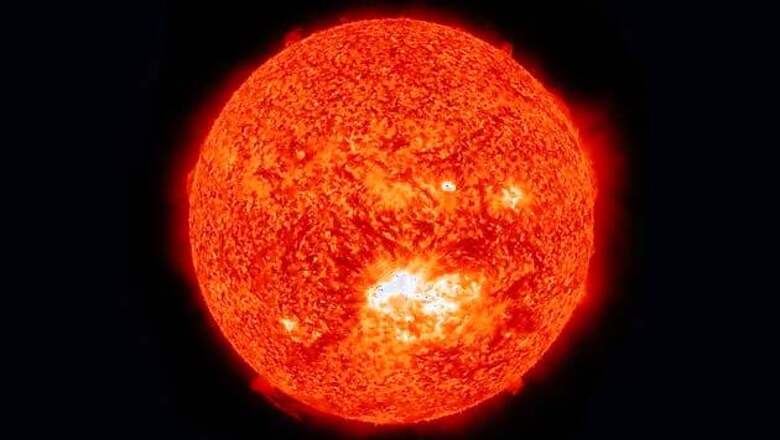
views
Washington: Scientists have finally decoded why the Sun's million-degree corona or outermost atmosphere is so much hotter than its surface, which has baffled astronomers for decades.
A team led by Paola Testa of the Harvard-Smithsonian Centre for Astrophysics (CfA) has found new clues to the mystery of coronal heating using observations from the recently launched Interface Region Imaging Spectrograph (IRIS).
The team found that miniature solar flares called "nanoflares" - and the speedy electrons they produce - might partly be the source of that heat, at least in some of the hottest parts of the Sun's corona.
A solar flare occurs when a patch of the Sun brightens dramatically at all wavelengths of light. During flares, solar plasma is heated to tens of millions of degrees in a matter of seconds or minutes.
Flares also can accelerate electrons (and protons) from the solar plasma to a large fraction of the speed of light. These high-energy electrons can have a significant impact when they reach Earth, causing spectacular aurorae but also disrupting communications, affecting GPS signals, and damaging power grids.
Those speedy electrons also can be generated by scaled-down versions of flares called nanoflares, which are about a billion times less energetic than regular solar flares.
"These nanoflares, as well as the energetic particles possibly associated with them, are difficult to study because we can't observe them directly," said Testa. Testa and her colleagues have found that IRIS provides a new way to observe the telltale signs of nanoflares by looking at the footpoints of coronal loops.
Coronal loops are loops of hot plasma that extend from the Sun's surface out into the corona and glow brightly in ultraviolet and X-rays.
The team inferred the presence of high-energy electrons using IRIS high-resolution ultraviolet imaging and spectroscopic observations of those footpoint brightenings. Using computer simulations, they modelled the response of the plasma confined in loops to the energy transported by energetic electrons.
The simulations showed that energy likely was deposited by electrons travelling at about 20 per cent of the speed of light.
Finding high-energy electrons that aren't associated with large flares suggests that the solar corona is, at least partly, heated by nanoflares, researchers said. The research was published in the journal Science.




















Comments
0 comment